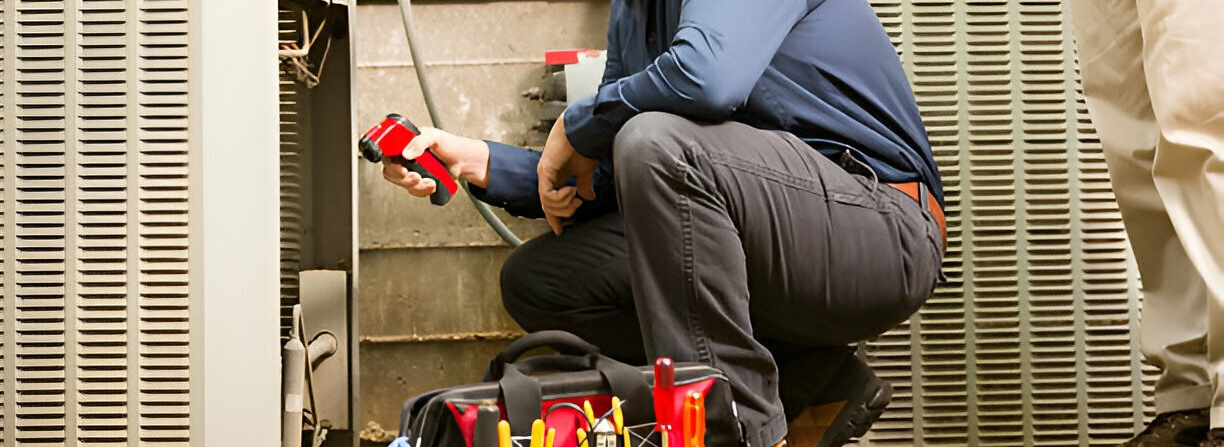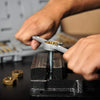
Troubleshooting Tips for Common Air Conditioning Problems
In the realm of DIY tool hardware, hardware shop retail, and global manufacturing, the significance of air conditioning systems in homes and businesses cannot be overstated. These systems play a vital role in ensuring comfort and productivity by regulating indoor temperatures and maintaining air quality. However, like all mechanical systems, air conditioners are prone to various issues that can impair their functionality or lead to system failure. The ability to diagnose and troubleshoot common problems is an invaluable skill for both DIY enthusiasts and professionals.
This comprehensive guide aims to equip readers with the necessary Air Conditioning repair toolkit guide to effectively identify and resolve typical air conditioning problems, emphasizing the importance of understanding the operational principles of these systems and the tools required for repair and maintenance tasks.
1. Air Conditioner Not Turning On
The issue of an air conditioner failing to power on is a common predicament that can stem from various factors, ranging from simple oversights to more complex electrical problems.
- Check Power Sources: Verify that the air conditioning unit is properly plugged in, and that the electrical outlet is functioning. Test the outlet with another device to ensure its delivering power.
- Inspect the Thermostat: Ensure the thermostat is set to "cool" and the temperature setting is lower than the current room temperature. Consider replacing the batteries if it's battery-operated.
- Examine Circuit Breakers and Fuses: Look for tripped circuit breakers or blown fuses in your home's electrical panel. Resetting the breaker or replacing fuses may solve the problem.
2. Insufficient Cooling
When an air conditioner runs but fails to cool the space adequately, it indicates inefficiencies within the cooling process, which could be attributed to a variety of causes.
- Clean or Replace Air Filters: Dirty air filters restrict airflow, significantly reducing cooling efficiency. Cleaning or replacing the filters can restore proper air flow.
- Check for Refrigerant Leaks: Low refrigerant levels due to leaks can impair the cooling capacity. Engage a professional to locate and repair any leaks, then recharge the system with refrigerant.
- Inspect the Coils and Fins: Clean evaporator and condenser coils from dust and debris. Straighten any bent fins using a fin comb for optimal air flow and heat exchange.
3. Unusual Noises
Squealing, grinding, or rattling sounds from an air conditioner are indicators of mechanical issues that need immediate attention to prevent more severe damage.
- Lubricate the Motor: Squealing noises might originate from a dry condenser fan or blower motor. Lubricating the motor bearings can eliminate these sounds.
- Tighten Loose Components: Rattling sounds often result from loose panels or components. Tightening screws and securing panels may resolve this issue.
- Inspect for Debris: Objects or debris trapped in the outdoor unit can cause grinding sounds. Removing any obstructions can prevent potential damage to the fan blades or other components.
4. Frequent Cycling
An air conditioner that frequently turns on and off, more than usual, is experiencing short cycling, which can lead to increased wear and energy consumption.
- Adjust Thermostat Settings: Incorrect thermostat settings or placement can cause short cycling. Ensure the thermostat is away from direct sunlight and heat sources.
- Clean the Condenser Unit: A dirty or obstructed condenser unit can hinder heat dissipation, leading to short cycling. Cleaning the unit may improve performance.
- Check for Refrigerant Issues: Similar to the insufficient cooling problem, low refrigerant levels can also cause frequent cycling. Seek professional assistance for repair and recharge.
5. Water Leakage Inside or Outside the Unit
Water leaks from an air conditioner, whether inside or outside the unit, can indicate drainage problems or other malfunctions.
- Unclog the Drain Line: A clogged condensate drain line is a common cause of water leakage. Use a wet/dry vacuum to clear any blockages.
- Inspect the Drain Pan: Cracks or holes in the drain pan can lead to water leakage. Replacement of the damaged pan is necessary to prevent further leaks.
- Ensure Proper Installation: Improper installation can cause uneven leveling, resulting in water pooling. Verify that the unit is level and adjust as needed.
6. Bad Odor
Musty or burning smells emanating from an air conditioner can compromise air quality and indicate underlying issues that require immediate action.
- Clean or Replace the Air Filters: Musty smells often arise from mold or mildew growth on clogged air filters. Cleaning or replacing the filters can eliminate the odor.
- Inspect for Electrical Issues: A burning smell may signal electrical problems such as burned-out motors or wiring issues. Turn off the unit immediately and consult a professional.
- Schedule Regular Maintenance: Prevent odor issues by scheduling annual maintenance, including cleaning the evaporator coils and condensate drain line to prevent mold growth.
7. Thermostat Problems
The thermostat acts as the control center for the air conditioning system, and malfunctions can disrupt the entire operation.
- Calibrate the Thermostat: Incorrect calibration can lead to improper temperature readings. Recalibrate the thermostat or consider upgrading to a digital model for more accuracy.
- Check Wiring Connections: Loose or corroded wires can impair thermostat function. Inspect and secure all connections, or replace damaged wires as necessary.
- Consider Location and Type: Ensure the thermostat is installed in an area with average room temperature and is compatible with your air conditioning system for optimal performance.
8. Frozen Evaporator Coil
A frozen evaporator coil can halt the cooling process, leading to system malfunction and inadequate cooling.
- Improve Air Flow: Restricted air flow due to dirty air filters or blocked return air ducts can cause the coils to freeze. Clean or replace filters and remove any obstructions.
- Check Refrigerant Levels: Low refrigerant can also lead to freezing. Have a professional inspect for leaks and recharge the system if needed.
- Inspect the Blower Fan: Ensure the blower fan is functioning correctly to maintain adequate air flow over the coils. Replace the fan motor if it's not operating efficiently.
9. High Energy Bills
An unexpected increase in energy bills despite normal usage patterns can indicate inefficiencies within the air conditioning system.
- Seal Ductwork Leaks: Leaks in the ductwork can lead to significant energy loss. Inspect ducts for any signs of leaks and seal them with duct tape or mastic.
- Upgrade Insulation: Poor insulation can cause cool air to escape, forcing the air conditioner to work harder. Enhance insulation in walls, attics, and around ducts.
- Invest in Energy-Efficient Models: If your unit is old and inefficient, consider replacing it with a more energy-efficient model that meets modern energy standards.
10. Remote Control Malfunctions
Issues with the air conditioner's remote control can affect convenience and control, hindering the user experience.
- Replace Batteries: A simple yet common oversight is depleted batteries. Replace them regularly to ensure uninterrupted operation.
- Reprogram the Remote: If the remote is not responding, reprogramming it according to the manufacturer's instructions may restore functionality.
- Check for Interference: Other electronic devices can interfere with the signal from the remote to the unit. Ensure there's no interference and try using the remote closer to the unit.
Related Article: Maintenance and Care Tips for Air Conditioning Repair Tools
Empowering Your DIY Journey in Air Conditioning Repair
Navigating the complexities of air conditioning repair can be a daunting task, especially when faced with a malfunctioning unit during the peak of summer or the depths of winter. However, armed with the right knowledge, tools, and troubleshooting tips outlined in this guide, beginners and savvy professionals alike can tackle common air conditioning problems with confidence. Each section provided aims to demystify the repair process, offering practical solutions and preventative measures to ensure your air conditioning system operates efficiently and reliably.
Related Article: Top 10 Air Conditioning Repair Tools for Beginners



